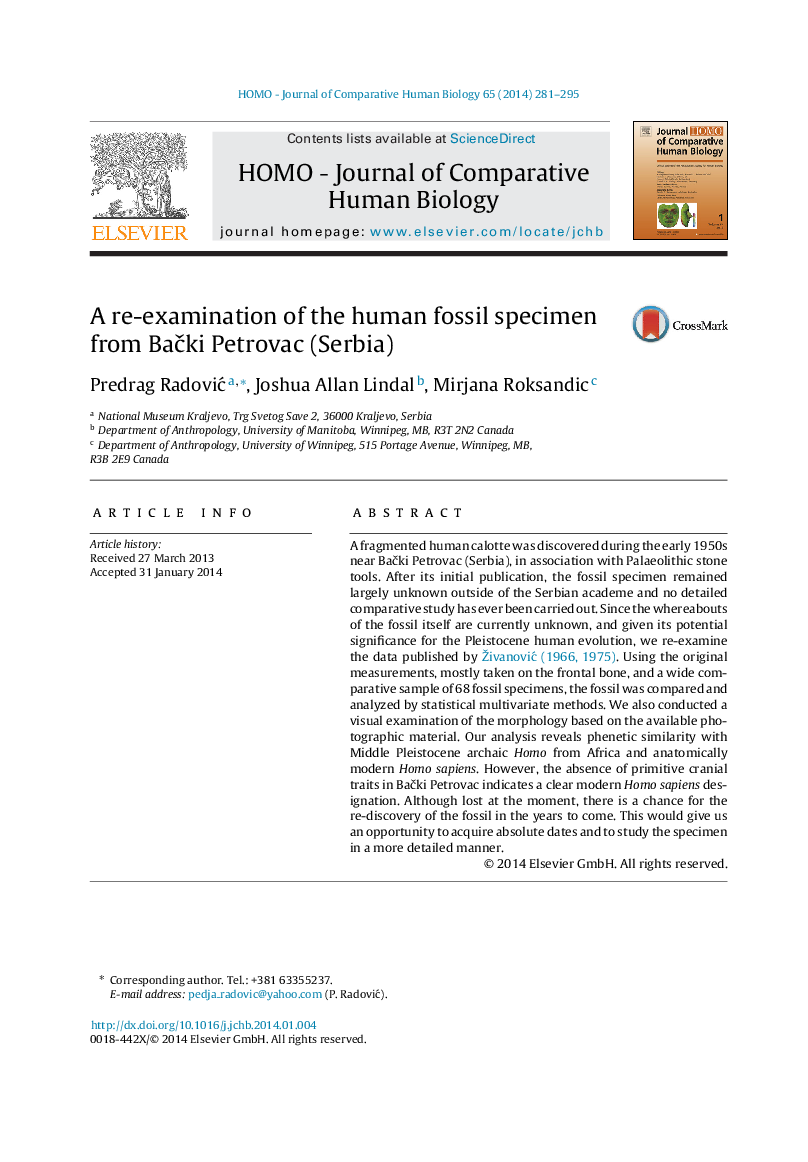| Article ID | Journal | Published Year | Pages | File Type |
|---|---|---|---|---|
| 100225 | HOMO - Journal of Comparative Human Biology | 2014 | 15 Pages |
A fragmented human calotte was discovered during the early 1950s near Bački Petrovac (Serbia), in association with Palaeolithic stone tools. After its initial publication, the fossil specimen remained largely unknown outside of the Serbian academe and no detailed comparative study has ever been carried out. Since the whereabouts of the fossil itself are currently unknown, and given its potential significance for the Pleistocene human evolution, we re-examine the data published by Živanović, 1966 and Živanović, 1975. Using the original measurements, mostly taken on the frontal bone, and a wide comparative sample of 68 fossil specimens, the fossil was compared and analyzed by statistical multivariate methods. We also conducted a visual examination of the morphology based on the available photographic material. Our analysis reveals phenetic similarity with Middle Pleistocene archaic Homo from Africa and anatomically modern Homo sapiens. However, the absence of primitive cranial traits in Bački Petrovac indicates a clear modern Homo sapiens designation. Although lost at the moment, there is a chance for the re-discovery of the fossil in the years to come. This would give us an opportunity to acquire absolute dates and to study the specimen in a more detailed manner.
